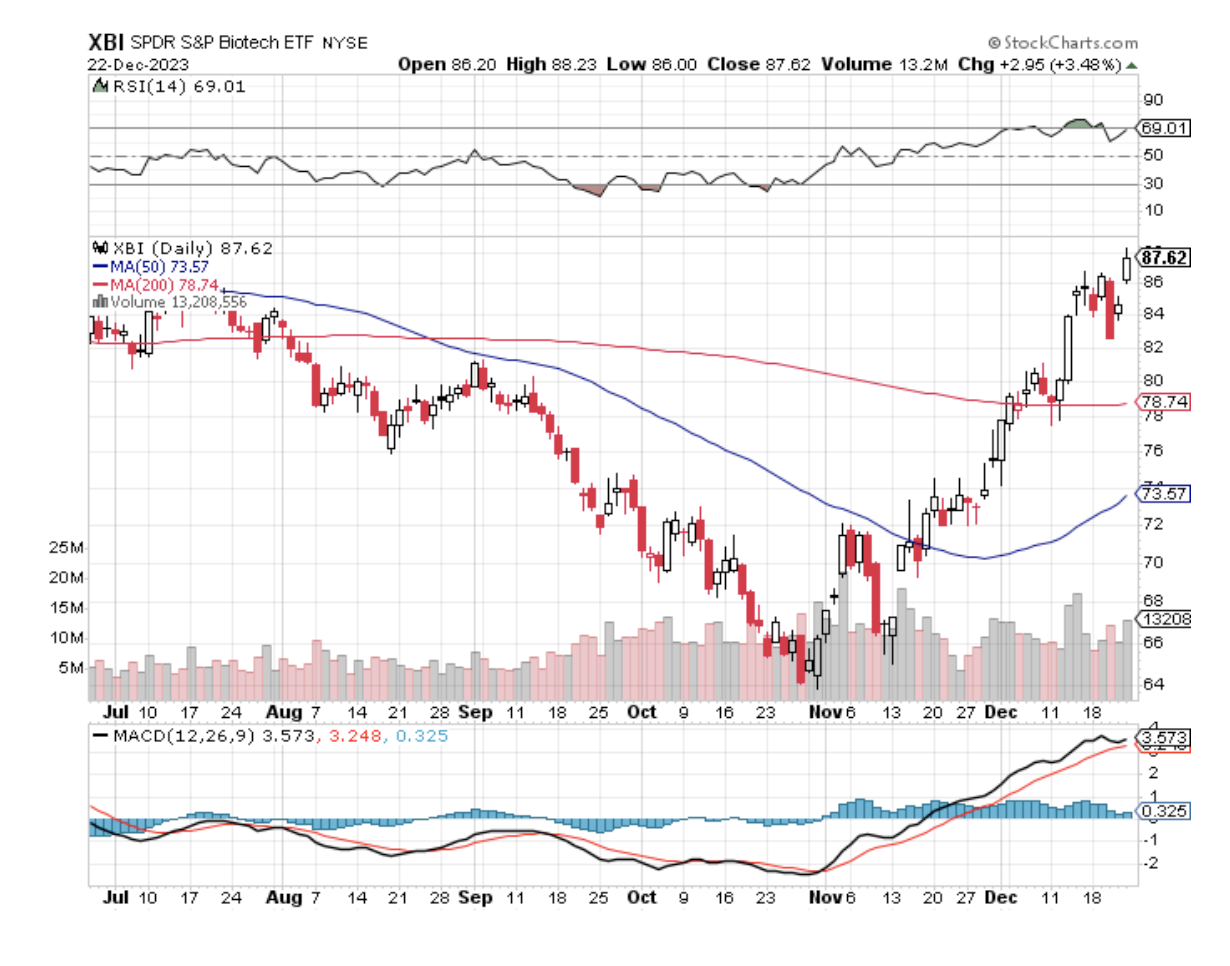The biotechnology sector, pretty much like a phoenix rising from the ashes of its recent lackluster performance, is experiencing a renaissance as 2023 draws to a close. The recent spree of high-stakes deals has set the stage for what could be a significant rebound, a situation that savvy investors should watch closely.
In a remarkable display of strategic maneuvering, AbbVie (ABBV) has been on an acquisition tear.
Earlier in December, they've recently snapped up Cerevel Therapeutics for an eye-popping $8.7 billion, only a week after announcing their intent to acquire ImmunoGen (IMGN) for a formidable $10.1 billion.
And in this high-stakes game, Roche Holding (RHHBY) isn't playing second fiddle, having declared their acquisition of Carmot Therapeutics for $2.7 billion.
This flurry of activity isn't just a few isolated incidents. It's actually a trend. Of the 18 biotech acquisitions exceeding $1 billion announced this year, a significant one-third have emerged since October. This surge is like a shot in the arm for the sector, suggesting a much-anticipated uptick.
But let's take a step back and consider the broader picture.
The SPDR S&P Biotech ETF (XBI) has shown some muscle in November and December. However, it's still trailing behind this year, down by 3%, while the S&P 500 has surged by 19.5%.
Now, focusing on the XBI, a temperature check for the sector: trading around $80, it's a steep drop from its heyday in the $140 range during late 2020 and early 2021. It's down nearly 50% from its peak in February 2021.
This isn't just a dip; it's a nosedive.
Looking at the turn of events, it’s possible that the AbbVie-ImmunoGen deal is perhaps the precursor to a more consistent pattern of mergers and acquisitions in 2024. It seems that we've hit the floor and the only way now is up, with M&A activities poised to inject some much-needed vitality into the sector.
In previous years, the biotech valuations took a hit, and understandably, companies were hesitant to settle for offers that undervalued them compared to their pandemic-era zeniths. But this year, the tide has turned.
Notably, the cumulative value of biopharma deals at a whopping $128 billion this year, shooting up from $61 billion in 2022.
Key transactions fueling this jump include Pfizer's (PFE) massive $43 billion deal for Seagen and Merck’s (MRK) $10.8 billion acquisition of Prometheus Biosciences.
The shift in the regulatory landscape is also worth noting.
Antitrust regulators, who initially seemed poised to block deals like Amgen's (AMGN) $27.8 billion acquisition of Horizon Therapeutics, have shown more flexibility. This change in stance is likely emboldening companies to pursue larger deals.
Now, let's talk about the financial clout.
Large-cap biopharma companies are projected to have about $199 billion in cash by year-end. There's a noticeable dip in dividends and stock buybacks, hinting at a strategic pivot towards mergers and acquisitions. It could indicate that we can expect Pharma to maintain an aggressive stance on the M&A front.
So, what's in store for the XBI and investors alike?
This uptick in M&A activity is like untying the strings of a tightly held purse, releasing cash back into the sector. It's a magnet for both specialist and generalist investor interest, a potential boon for the XBI.
Predicting the next wave of M&A is basically like reading tea leaves. Yet, this year has shown a marked preference for biotechs specializing in obesity, immunology, and cancer.
A notable example is the speculation around Pfizer eyeing a deal with a biotech firm developing an anti-obesity pill.
The ripple effect? Shares of Viking Therapeutics (VKTX) and Terns Pharmaceuticals (TERN), both in the obesity pill race, have seen their stocks jump 47% and 62.5%, respectively, in December.
Evidently, the biotech sector, once in the doldrums, is now witnessing a renaissance. This resurgence is marked by major deals reshaping the industry landscape, holding significant implications for 2024 and beyond.
For investors, this sector represents a fertile ground for growth and opportunity. Staying informed and nimble is key to capitalizing on these dynamic developments. The biotech sector, it seems, is back in the game, and how!

